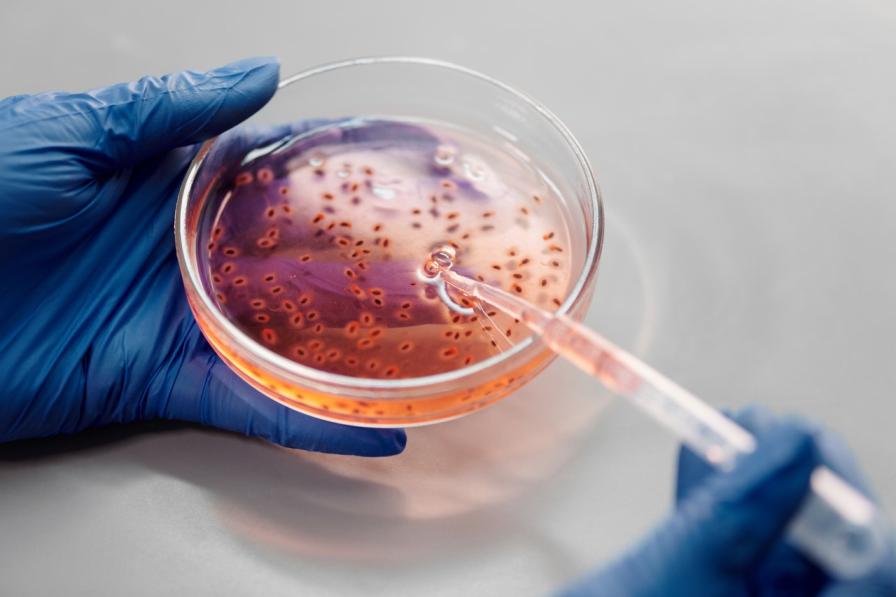
“Bacteria Infections: Understanding the Threat”- When the Black Death swept across Europe in the 14th century, it killed one-third of the population. The level of destruction unleashed by a tiny bacteria (Yersinia pestis), invisible to the naked eye, is unfathomable to imagine today.
Yet, right from the days of yore, these tiny microbes have helped life thrive on earth but also caused unscalable damage in the form of epidemics and pandemics.
With our evolution, the dread of bacterias and their infections have increased; and with it, the advancements in medical science to tackle it.
However, with the rising use of antibiotics, these bacteria have become resistant to medicines and more tolerant, causing a higher and deadlier risk of infections.
Tuberculosis
Tuberculosis is an ancient disease that remains a modern-day problem. It has been infecting humans for millennia and was called by many different names such as phthisis, consumption, and the White Plague till the discovery of the causal agent, the bacteria Mycobacterium tuberculosis.
Unfortunately, it remains a disease with one of the highest fatality rates, causing the death of 1.5 million people in 2020, according to the WHO’s 2021 Global TB report.
Although the disease can affect any part of the body, infection in the lungs or throat remains a prominent form and is spread from the cough droplets of the infected patient.
However, the risk of infection can be prevented by simple measures such as getting BCG vaccinated, early diagnosis, and good ventilation and hygiene.
In addition, it is imperative to keep the infected patient separated from other patients in healthcare settings to prevent droplet infection and follow preventive measures.
Tetanus
Tetanus, commonly known as lock-jaw, is a life-threatening disease caused by the bacteria Clostridium tetani. According to the CDC, these bacteria can be found in the environment, including dirt, dust, and animal excrement. A person is at risk if they have an open wound that is at risk of contamination by bacteria.
Once the bacteria enter the wound, they can create a toxin that impairs muscle function, causing stiffness and rigidity. It can cause life-threatening breathing problems such as tightening of vocal cords and cause nervous system impairment, ultimately leading to death.
However, the infection can be prevented through proper vaccination and good wound care.
Sepsis
Sepsis is a bacterial infection. In sepsis, as an abnormal reaction, the immune system releases chemicals into the blood, triggering widespread inflammation in the body, eventually leading to organ damage. In addition, sepsis can lead to a sudden drop in the infected individual’s blood pressure, becoming deadly.
Bacteria can enter the body through surgical wounds, IV lines, urine catheters, and bedsores in hospitalized patients and cause sepsis, one of the central line-associated bloodstream infections (CLABSIs). CLABSI prevention can, in turn, guard patients from sepsis, which can be achieved by proper hygiene and health care management in hospitals.
Gangrene
Gangrene can be a fatal disease with severe complications. It is generally caused by a critically low blood supply or a bacterial infection. It affects the body’s extremities, such as toes and fingers, and causes tissue death. It can also affect other parts of the body and internal organs.
Gas-gangrene, a type of gangrene, is caused by Clostridia. These bacteria produce an infection, resulting in gas bubbles and poisons within the affected area. Although rare in the United States, gangrene can be lethal.
According to a source, in the United States, about one thousand people contract gas gangrene each year, with a 100% mortality rate if left untreated. However, the death rate can be as low as 5% with proper treatment.
It can be prevented by carefully administering any wounds, especially if you have a condition that affects blood circulation, such as Raynaud’s disease.
Other deadly bacterial infections are Pneumonia, Cholera, Anthrax, and Botulism. If these infections are not diagnosed early, they can cause serious complications that can turn lethal.
As a preventive measure, one should always maintain proper hygiene and get vaccinated for these diseases. In addition, taking care of your health and eating healthy food can boost immunity and keep these infections at bay.
Also Read
- lifetime-fitness-membership-prices-locations
- Disadvantages-of-processed-food
- Healthy-and-unhealthy-foods-for-diet
- Health-information-specialist
- Western-health-advantage
- 4-factors-to-consider-when-planning-meals
- Benefits-of-biotin
- Keto-diet-advantages-and-disadvantages
- What Makes You Loopy After Wisdom Teeth Removal
